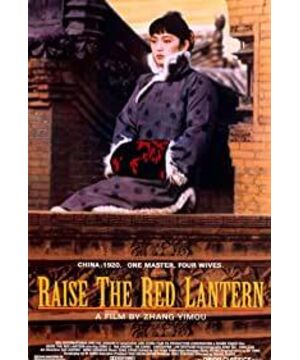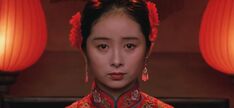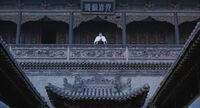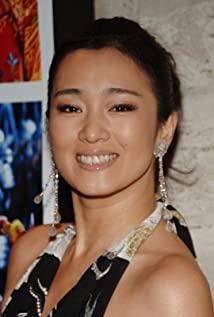So after reading it again, I am still surprised. This surprise is no longer from the so-called ideology, but suddenly found that Laomouzi's sense of form and symbolism is really too strong, too strong, too strong. Even in his own films, the dyeing workshops in "Judou" and the colors in "Heroes" pale in comparison.
The sense of form and symbolic meaning of the lantern and the hammer foot goes without saying, a single "hammer foot of the lantern" will make the intrigue of the four-bedroom wives and concubines reach a white-hot level. It is said that China is a country that flaunts etiquette and shame, and it is unlikely that this method of listing in the kiln will appear in such a big family. And the residence of the third concubine Mei Shan is decorated with several large Peking Opera masks, which makes it even more incompatible with the old-fashioned Chinese family. It is impossible for Laomouzi not to understand the implications, but he still did it, and blatantly. It can be seen that he has regarded the form as a purely symbolic orientation, and he has no scruples in the face of obvious inconsistencies with reason. If it is not to please foreigners, it can only be said to be crazy.
The so-called "do not go crazy, do not survive", the real master must be crazy, only immersed in it and detached from it, can you come up with a real classic. And "High Red Lantern" is more like a work that is immersed in it, but not detached from it. The places that are deliberately done are more than the above, the gloomy lights and black wraps, the old man who never shows his face, the reincarnation of summer, autumn, winter and summer... Such a large-scale manipulation of form is definitely one of the best in Laomouzi's films. of.
But I prefer to understand it as a conscious experiment by Lao Mozi. In fact, starting from his famous work "Red Sorghum", although the sense of form is also very strong, it is well integrated into the story and thoughts, and it seems to complement each other and set off each other, which is perfect. I still think this is an old Mouzi's best and most mature work. In the later stage, "The Lawsuit of Qiu Ju" and "No One Can Be Missed", although they are still full of form, they basically serve ideas and stories. on the story. Such experiments are really rare in Chinese films, and there are almost no ones who play so well, so the Venice Film Festival did not hesitate to award Laomouzi another silver lion, and the Oscar for best foreign language film is almost in hand.
For the masters, it is not necessary for every work to be a classic, but to have continuous innovation ability and pioneering experimental spirit. From this point of view, Laomouzi's performance in "Raise the Red Lantern" is still worthy of praise, and he cannot be unilaterally judged as the work of a craftsman, although some parts really seem to be So abrupt.
After such a long time, looking back at this film, the strong sense of form and symbolism is still shocking, which may be the charm of the classic.
View more about Raise the Red Lantern reviews











